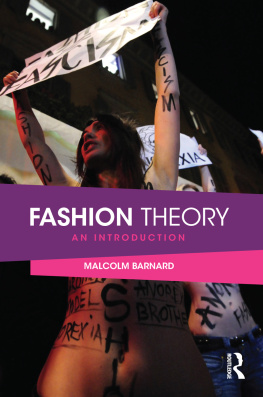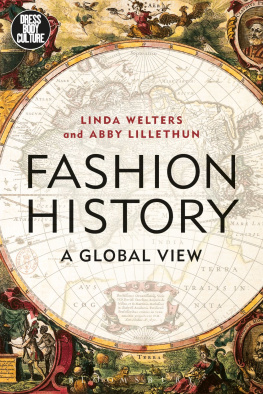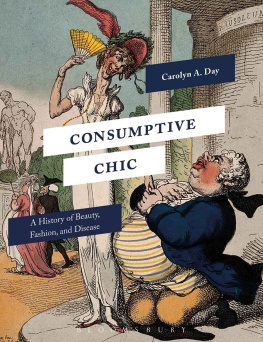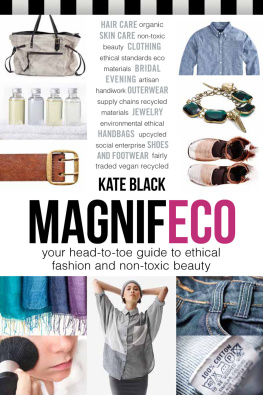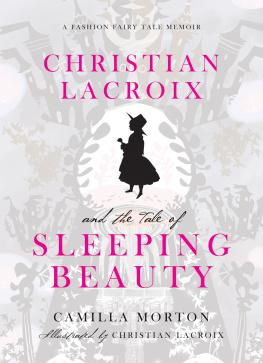FASHION AND BEAUTY IN THE TIME OF ASIA
NYU SERIES IN SOCIAL AND CULTURAL ANALYSIS
General Editor: Phillip Brian Harper
Nice Work If You Can Get It: Life and Labor in Precarious Times
Andrew Ross
City Folk: English Country Dance and the Politics of the Folk in Modern America
Daniel J. Walkowitz
Toilet: Public Restrooms and the Politics of Sharing
Edited by Harvey Molotch and Laura Norn
Unhitched: Love, Marriage, and Family Values from West Hollywood to Western China
Judith Stacey
The Sun Never Sets: South Asian Migrants in an Age of U.S. Power
Edited by Vivek Bald, Miabi Chatterji, Sujani Reddy, and Manu Vimalassery
Chronic Youth: Disability, Sexuality, and U.S. Media Cultures of Rehabilitation
Julie Passanante Elman
Abstractionist Aesthetics: Artistic Form and Social Critique in African American Culture
Phillip Brian Harper
Fashion and Beauty in the Time of Asia
Edited by S. Heijin Lee, Christina H. Moon, and Thuy Linh Nguyen Tu
Fashion and Beauty in the Time of Asia
Edited by S. Heijin Lee, Christina H. Moon, and Thuy Linh Nguyen Tu
NEW YORK UNIVERSITY PRESS
New York
NEW YORK UNIVERSITY PRESS
New York
www.nyupress.org
2019 by New York University
All rights reserved
References to Internet websites (URLs) were accurate at the time of writing. Neither the author nor New York University Press is responsible for URLs that may have expired or changed since the manuscript was prepared.
Library of Congress Cataloging-in-Publication Data
Names: Lee, S. Heijin, editor. | Moon, Christina H., editor. | Tu, Thuy Linh Nguyen, editor.
Title: Fashion and beauty in the time of Asia / edited by S. Heijin Lee, Christina H. Moon, and Thuy Linh Nguyen Tu.
Description: New York : New York University Press, [2019] | Series: NYU series in social and cultural analysis | Includes bibliographical references and index.
Identifiers: LCCN 2018030567| ISBN 9781479892150 (cl : alk. paper) | ISBN 9781479892846 (pb : alk. paper)
Subjects: LCSH: Feminine beauty (Aesthetics)Asia. | Beauty cultureAsia. | FashionAsia. | Clothing tradeAsia.
Classification: LCC HQ 1220. A 78 F 36 2019 | DDC 646.7/2095dc23
LC record available at https://lccn.loc.gov/2018030567
New York University Press books are printed on acid-free paper, and their binding materials are chosen for strength and durability. We strive to use environmentally responsible suppliers and materials to the greatest extent possible in publishing our books.
Manufactured in the United States of America
10 9 8 7 6 5 4 3 2 1
Also available as an ebook
CONTENTS
S. Heijin Lee, Christina H. Moon, Thuy Linh Nguyen Tu
Thuy Linh Nguyen Tu
Minh-Ha T. Pham
S. Heijin Lee
Emily Raymundo
Ann Marie Leshkowich
Denise Cruz
Miliann Kang
Jessamyn Hatcher
Nellie Chu
Christina H. Moon
FIGURES
Introduction
S. HEIJIN LEE, CHRISTINA H. MOON, THUY LINH NGUYEN TU
Last September, the Metropolitan Museum of Art, after an extended run, closed the exhibit China: Through the Looking Glass, on the impact of Chinese aesthetics on Western fashion. This was not the museums first costume exhibit on AsiaOrientalism and fashion have been well-trod themes within the costume museum worldand we suspect will not be its last. But in this latest iteration, the museum has had a harder time figuring China as a ghostly specter haunting the European imagination of Yves Saint Laurent and other fashion cognoscenti. When the singer Rihanna stole the spotlight at the opening night gala wearing Gou Pei, one of the only Chinese designers shown that evening, critics and consumers worldwide, many from China, denounced the museum and the fashion establishment for its business-as-usual exclusions. The kerfuffle made clear that China can and does disrupt Western narratives about itself rather than quietly serving as their backdrop.
This most recent encounter between fashion and the East presents an occasion to think about how the geographies of fashion and beauty have shifted, particularly in the ways that Asia has emerged as a cultural and economic force in this story. The China exhibit became the Mets most popular exhibition in its 145-year history (nearly 800,000 people saw it), driven in large part by international visitors (who accounted for 40% of the audience), but, most strikingly, primarily Chinese (14% in total, the Mets largest single group of overseas visitors). What was it that led an exhibit on China and fashion to garner such interest?
Despite prevailing narratives, China has had a long relationship with fashion, certainly as makers of clothing, but more recently as one of the most lucrative markets for Western fashion designers. ( Vogue editor Anna Wintours recent tour of China gives some indication of its rising prominence.) This kind of attention to fashion is not limited to only China. Across Asia, luxury goods have found enthusiastic consumers in Shanghai, Mumbai, Seoul, and Saigon alike, prompting endless popular accounts of an ever-expanding world of happy shoppers. In fact, in mounting their China exhibit, the curators were accused by some critics of a calculated move to capture some of that gold dust, since Asia has become the buzz of many conversations, in every sector from Hollywood to finance, travel to e-commerce.
This comment highlights the immense (and, to some, immensely threatening) shift in the political, cultural, and economic power of Asia, evidenced in part through the consumption of Western goods in the region. But that is only part of the story. A fuller picture would take into account Asias own flourishing culture industriesfilm, media, music, fashion, and beautywhich have also grown tremendously, vying for (and in many instances commanding) the markets in their local contexts. Korean and Japanese beauty products, for instance, are higher grossing than any European product in Asiaproducts that have long been the industry standard for luxury cosmetics across the region. Chinas own fashion industries have expanded so vastly that Chinese entrepreneurs have now bought old Italian factories to reproduce and preserve the so-called Italian couture tradition, using the same machines and often employing experienced and aging Italian workers, only in China . There are more than 200 design schools in China (as opposed to just 53 in the United States), turning out fashion designers who will work in the sample rooms of factories making clothes for global design brands. Moreover, Chinese-owned manufacturing firms have been at the vanguard of seemingly Western concerns regarding fashion and sustainability on a mass scale, experimenting with zero-waste factory processes that produce fabrics without the use of water, while raising labor standards and developing codes of social responsibility and conduct with American and European fashion brands.
As these brief examples reveal, fashion and beauty and Asia are intimately related, and have long been so. Think, for instance, about how the arrival of the Chinese manteaux in 1700s Paris set off a craze that launched a thousand couturiers. The production, consumption, and distribution of fashion and beauty, in other words, have never been located in defined and static geographies. Rather, they move in multiple directions, transforming and becoming transformed by their local contexts, and giving shape to globalization in the spaces that they engender and inhabit: in the nail salon and beauty counters; the museums and malls; the sidewalks and runways.





